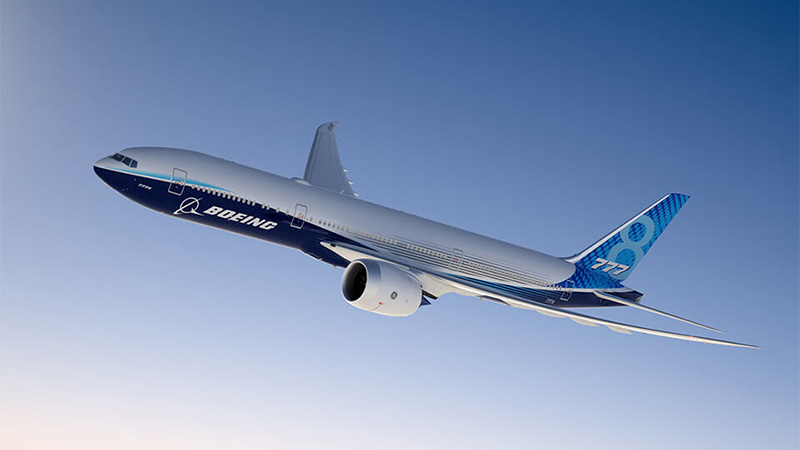

Image Courtesy: Boeing
In November 2021, Boeing demonstrated its latest widebody airliner, the 777X, at the Dubai Air Show. It flew from Seattle, USA, to Dubai, marking the test aircraft’s longest flight to date. Although the unveiling of a new commercial airliner is always special, the 777X will usher in a new age of efficient passenger air travel.
The Boeing 777X has been dubbed the world’s biggest twin-engine aircraft with greater fuel efficiency than the company’s existing models. It builds on existing 777 and 787 aircraft and includes a range of updated and efficient changes.
Perhaps the biggest change is its engine, the GE9X, produced by General Electric. It uses novel ceramic matrix composites, a larger fan, and higher bypass and compression ratios than the GE90, so will improve fuel efficiency by up to ten per cent. The engine will feature on both 777X models, the 777-8 and 777-9.
Both planes also have new composite wings that are 71.75 metres when in flight. However, to fit into the same size category as the existing 777s, they feature folding wingtips, a first in commercial aerospace. Designed by Liebherr Aerospace, the system means the wings can fold to 64.82 metres when on the ground.
The wings use the 787 design but with less sweep and a higher lift-to-drag ratio, which also helps improve flight efficiency. Combined with the new composite materials, this makes the 777X wings around seven per cent more efficient in flight.
Another big difference is the aircraft’s lower operating costs, helped in part by its wider and more customisable interior. It is 16 inches wider than existing aircraft and has room for ten seats abreast rather than nine. Combined with a longer fuselage, it brings the fuel burn per seat down by 20 per cent compared to the Boeing 777-300ER.
The Boeing 777X range will hopefully usher in a new age of efficient commercial aviation. While it is not quite zero-emission, it is certainly a step in the right direction.
As of October 2021, there were 310 aircraft on order to the largest commercial airlines. However, Boeing is roughly two-and-a-half years behind schedule and now believes deliveries will begin in 2023. It is still waiting on safety certification from the FDA, which was delayed due to a lack of data.
Even so, its demonstration at the Dubai Air Show at least shows it is moving in the right direction. It flew 15 hours nonstop to reach the show, and, while this is not even close to the longest commercial flight, it demonstrates good future potential for the 777X.
It is fair to assume that Boeing will eventually try to replace its existing aircraft with more efficient models, such as the 777X range. The two models, with a seating difference of 40 and a length difference of around seven metres, will give Boeing flexibility in what it can offer customers. Despite construction and certification delays, it will be interesting to see how this new generation of 777s will impact the commercial aerospace industry.